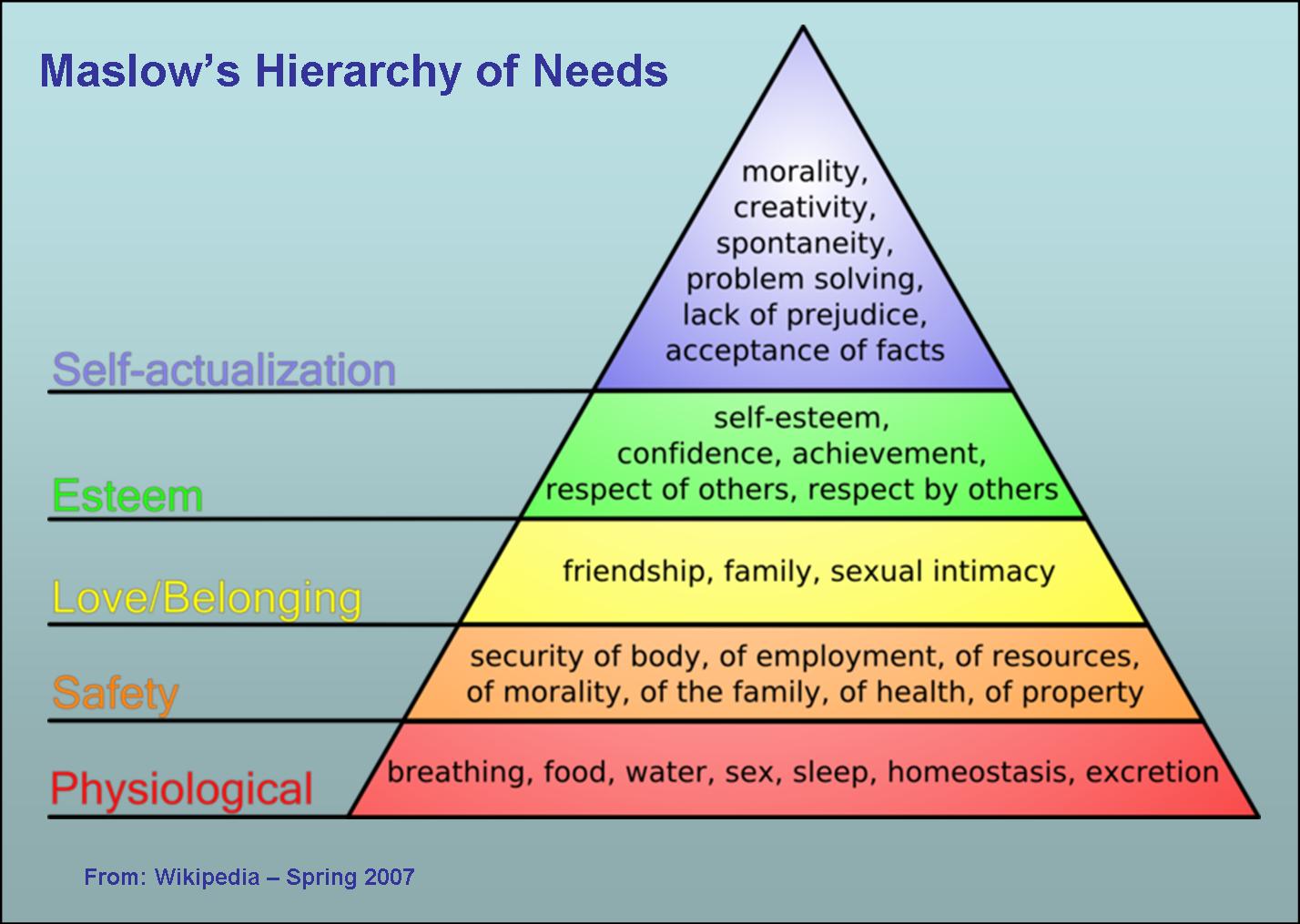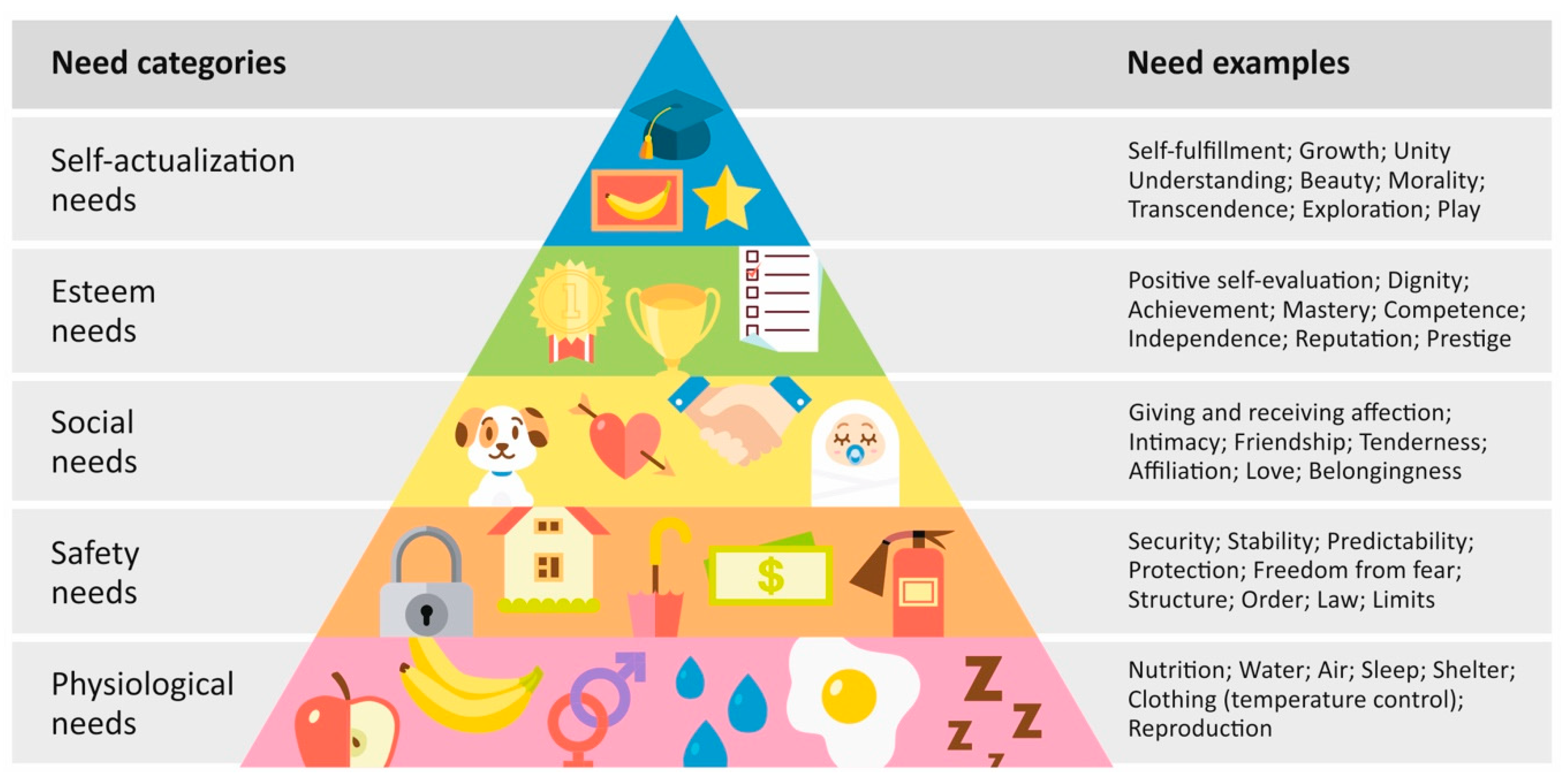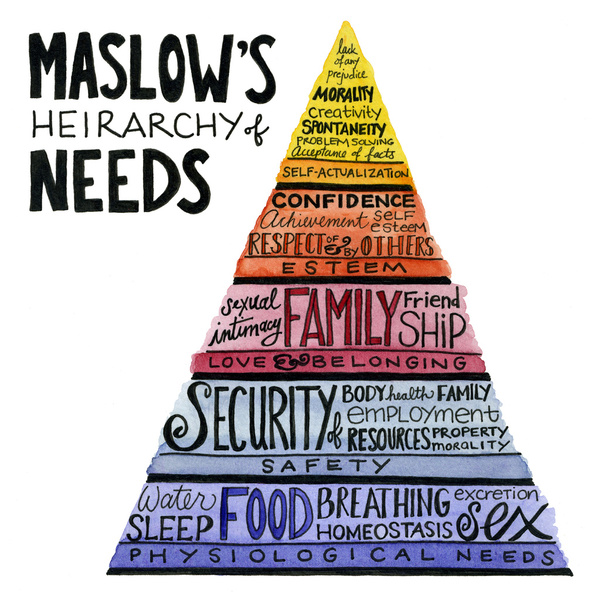Everyone wants to feel fulfilled and satisfied in life. Whether we realize it or not, our needs play a vital role in shaping our behavior and motivations. One theory that helps us understand this concept is Maslow’s Hierarchy of Needs. This theory was proposed by Abraham Maslow, an American psychologist, in the mid-20th century. Maslow believed that human beings have certain needs that must be fulfilled in a specific order to achieve self-actualization and personal growth.
Maslow’s Hierarchy of Needs
 According to Maslow’s theory, there are five levels of needs that individuals seek to satisfy, starting from the most basic physiological needs to the highest level of self-actualization. These needs are presented in the form of a pyramid, each level building upon the previous one.
According to Maslow’s theory, there are five levels of needs that individuals seek to satisfy, starting from the most basic physiological needs to the highest level of self-actualization. These needs are presented in the form of a pyramid, each level building upon the previous one.
At the bottom of the pyramid are the physiological needs, which include basic requirements for survival such as food, water, shelter, and sleep. These needs are essential for our physical well-being. Once these needs are met, individuals move up to the next level.
 The next level is safety needs, which encompass personal security, financial stability, and a sense of stability in life. These needs motivate individuals to seek employment, save money, and establish a safe environment for themselves and their loved ones.
The next level is safety needs, which encompass personal security, financial stability, and a sense of stability in life. These needs motivate individuals to seek employment, save money, and establish a safe environment for themselves and their loved ones.
 Once the safety needs are met, individuals move up to the third level known as belongingness and love needs. This level involves the need for love, affection, and a sense of belonging. It includes forming meaningful relationships, friendships, and being part of social groups or communities.
Once the safety needs are met, individuals move up to the third level known as belongingness and love needs. This level involves the need for love, affection, and a sense of belonging. It includes forming meaningful relationships, friendships, and being part of social groups or communities.
 The fourth level is esteem needs, which include the need for recognition, respect, and a positive self-image. This level involves the desire for achievement, status, and the feeling of being valued and appreciated by others.
The fourth level is esteem needs, which include the need for recognition, respect, and a positive self-image. This level involves the desire for achievement, status, and the feeling of being valued and appreciated by others.
 Finally, at the top of the pyramid is the level of self-actualization, which represents the need to fulfill one’s full potential and achieve personal growth. Self-actualization involves pursuing meaningful activities, developing talents and skills, and engaging in creative endeavors.
Finally, at the top of the pyramid is the level of self-actualization, which represents the need to fulfill one’s full potential and achieve personal growth. Self-actualization involves pursuing meaningful activities, developing talents and skills, and engaging in creative endeavors.
 Although Maslow’s Hierarchy of Needs is widely recognized and used as a framework for understanding human motivation, it’s important to note that not every individual follows the same progression. People’s needs and priorities can vary based on cultural influences, personal experiences, and individual differences.
Although Maslow’s Hierarchy of Needs is widely recognized and used as a framework for understanding human motivation, it’s important to note that not every individual follows the same progression. People’s needs and priorities can vary based on cultural influences, personal experiences, and individual differences.
 In conclusion, Maslow’s Hierarchy of Needs provides a valuable understanding of the different levels of needs that individuals strive to fulfill. It reminds us that our needs are interconnected and that our motivation to fulfill them can significantly impact our behavior and well-being. By recognizing and addressing these needs, we can work towards achieving a balanced and fulfilling life.
In conclusion, Maslow’s Hierarchy of Needs provides a valuable understanding of the different levels of needs that individuals strive to fulfill. It reminds us that our needs are interconnected and that our motivation to fulfill them can significantly impact our behavior and well-being. By recognizing and addressing these needs, we can work towards achieving a balanced and fulfilling life.
 It’s important to remember that self-actualization does not mean reaching a state of perfection or complete satisfaction. It is a continuous journey of personal growth and development. By understanding Maslow’s theory and reflecting on our own needs, we can make conscious choices to prioritize our well-being and work towards fulfilling our potential.
It’s important to remember that self-actualization does not mean reaching a state of perfection or complete satisfaction. It is a continuous journey of personal growth and development. By understanding Maslow’s theory and reflecting on our own needs, we can make conscious choices to prioritize our well-being and work towards fulfilling our potential.
 In conclusion, Maslow’s Hierarchy of Needs serves as a roadmap for understanding human motivation and behavior. It reminds us that our needs are interconnected and that we must address them in the appropriate order to achieve personal growth and fulfillment. By acknowledging our needs and working towards fulfilling them, we can strive to live a balanced and meaningful life.
In conclusion, Maslow’s Hierarchy of Needs serves as a roadmap for understanding human motivation and behavior. It reminds us that our needs are interconnected and that we must address them in the appropriate order to achieve personal growth and fulfillment. By acknowledging our needs and working towards fulfilling them, we can strive to live a balanced and meaningful life.